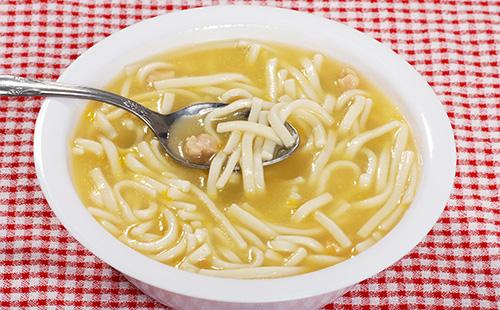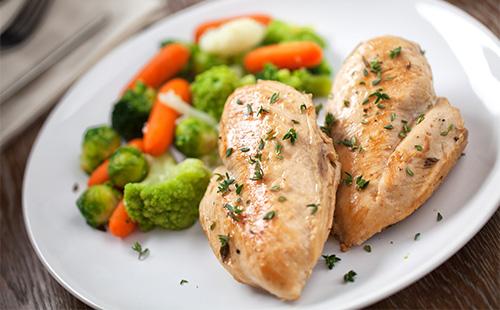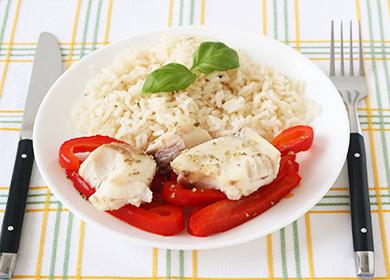The content of the article
Digested fats go back to the liver. Fat breakdown products cannot travel with blood in their free form, because they do not dissolve in water. And the liver gives them a “package” in the form of containers of protein, forming lipoproteins.
But the main “duties” of the liver relate to filtering the blood from the excess of obsolete or simply extraneous components that it breaks down, turning them into something more suitable for assimilation or elimination.
Causes and types of liver inflammation
Hepatitis is called inflammation of the liver tissue, and inflammation of its ducts is called cholangitis. Cholecystitis, an inflammation of the gallbladder, is also widely known. Due to the outflow of bile from the hepatic ducts to the gall bladder, and not vice versa, cholecystitis can exist independently - not affect the condition of the liver. But her diseases, especially those accompanied by the formation of stones, soon provoke cholecystitis as a complication.
Hepatitis causes various causes.
- Specific viruses. The pathogens of not only A, B and C-types of hepatitis, but also D, G TT SEN are already known. Some of them were discovered less than ten years ago and are under active study. It is still difficult to say something specific about their properties or the treatment of the viral hepatitis caused by them.
- Some drugs. Usually with toxic effects on the liver (all remedies for atherosclerosis, some for diabetes). Sometimes hepatitis provokes a long intake of several different drugs when an excess is created. Most often, hepatitis passes after the withdrawal of the funds that caused it, but this does not always happen. Of particular danger in this regard are statins (remedies for atherosclerosis). They provoke not only hepatitis, but also liver cancer.
- Alcohol of different strengths. With prolonged abuse of alcohol. The strength of alcohol consumed does not affect the rate of development of the disease - only the extent and duration of the "libations." Alcoholic hepatitis is also reversible, but its underlying addiction is less treatable.
- Poisons and toxins. A related drug and alcohol is toxic hepatitis, since it occurs when hepatotropic poisons (substances with specific toxicity to the liver) enter the body. Antibiotics (especially sulfonamides like “Biseptol”), As well as phosphorus, arsenic, hydrocarbons (components of exhaust gases), phenols (the basis of many disinfectants), pesticides. A single ingestion of a large dose of hepatotropic poisons provokes acute toxic hepatitis, and repeated administration of their small doses is chronic. In both cases, with the cessation of the action of the poison (if only a single dose did not lead to organ failure), the inflammation of the liver fades, and the functions are restored. Diet for toxic hepatitis is not as important as the speedy removal of toxin from the body. But during the acute period, it should be strict - completely eliminate fatty, fried and spicy foods, based on cooking, stewing and chopping cooked dishes.Patients with toxic hepatitis are shown a protein diet with a sufficient content of carbohydrates. You need to eat in small portions and often - six or more times a day. Simultaneous damage to the liver and kidneys is a contraindication to a purely protein diet. In this case, it is better to use them, generously "diluting" with carbohydrates and fiber.
- Pathologies of other organs. Most often also digestive or excretory. Also, reactive hepatitis can develop as a result of gastritis, duodenal ulcers, chronic pancreatitis, or even intestinal infection by worms. It is eliminated by the discovery and treatment of its true cause, but until it is found it is distinguished by a persistent, recurrent course.
- Autoimmune mechanisms. Autoimmune hepatitis is one of the rare and extremely dangerous scenarios of hepatitis due to its unpredictability and incurability. The effectiveness of immunosuppressants with it, in contrast to other autoimmune diseases, is reduced, and it is only partially possible to control the process of liver destruction with the help of the entire set of therapeutic measures.
- Bacteria and protozoa. For example, when infected with pale treponema (pathogen syphilis) or leptospirosis. Damage to the liver with bacterial hepatitis is always secondary and develops slowly (bile is one of the least favorable environments for the multiplication of bacteria). But then treating it is harder then. Often the focus remains in the liver even after successful treatment of the underlying infection.
Diet for hepatitis A ...
You can get hepatitis A through dirty foods and water, but there is a vaccine for it. Almost 99% of patients tolerate this hepatitis in a mild form and recover with the formation of lifelong immunity. The remaining 1% are those who suffered from severe hepatitis A or died as a result of its fulminant (fulminant) development.
The diet for acute hepatitis A should be followed no more than two weeks, with a mild course, minimal restrictions on the amount of any fats in food are necessary. A severe form requires the use of simple, low-fat, boiled or steam dishes, preferably in crushed form.
... hepatitis B
Features of the virus In the following.
- Transmission path. The virus is transmitted from the patient to a healthy person only through close personal contact, through blood that has come in contact with damaged skin, as well as with saliva and sperm. Well adapted for survival in the environment, the hepatitis B virus retains contagion on the blood-stained blades of the patient, syringe needles, tips of scissors and other sharp-cutting “utensils” for a whole week. It is transmitted to the child from the mother during childbirth, but not during pregnancy.
- Effect of age. The younger the person infected with hepatitis B, the higher the risk of the disease becoming latent in the chronic stage. Conversely, the older he is, the higher the chances that after acute jaundice, hepatitis B will cure itself spontaneously.
Diet for hepatitis B, occurring with jaundice, requires strict restriction of foods containing any fats, spicy, fried, pickled dishes. It is necessary to eat in small portions, five to seven times a day, chopping food before use and avoiding the "dry dryer".
... and hepatitis C
Hepatitis C is very similar to hepatitis B:
- also transmitted with blood - as well as with saliva and other body fluids of the patient;
- has a long incubation period - can vary from two months to six months.
But he is more often than others inclined to proceed chronically and secretively, disguising himself as other liver pathologies. Due to the high ability of the virus to "mimicry", patients may not suspect infection by it for years and, therefore, do not worry about what can be eaten with hepatitis c and what cannot. Hepatitis C is carcinogenic, but it becomes truly dangerous in combination with other liver diseases, including superinfection with closely related strains (B or D).
What should be the diet? The meaning of the diet for chronic hepatitis C is not much different from nutrition for other hepatitis: high protein and fiber and a restriction on fats of all kinds, spicy and fried.

How to eat during illness
Diet for hepatitis is designed to spare the liver as much as possible. It is based on three prohibitions.
- On fats. All species, including plant species, since bile is also needed to break them down. Animal fats should be limited more strictly (cholesterol is released from them, the “packing” of which takes an additional resource from the liver). This is especially true of refractory fats: beef, lamb. But you can’t completely cancel fats, because with a cholesterol deficiency in food, the liver doubles its own production. Mixed and modified fats (margarine, spread) require complete cancellation. They are characterized by poor digestibility and carcinogenicity even with a healthy liver.
- On sharp. This refers not only to black pepper, but also vinegar. Appetite stimulants like spices and marinades at the same time are good choleretic drugs. With stones or obstruction of the ducts, their intake may result in colic. Unobstructed and accelerated outflow of bile forces the liver to synthesize new bile faster, which the liver is often unable to do due to hepatitis and the degenerative processes provoked by it.
- On fried. This ban was created even at a time when it was by itself implied that you can fry any dishes only on fats. But in the past few years, air grills, non-stick pans and other kitchen appliances have been on sale that allow you to reduce / eliminate the addition of oils. And now it is already allowed to lightly fry some products with their help.
Given the prevalence of the chronic course, nutrition for hepatitis C can be special only with an exacerbation of the disease, and it is not necessary to follow its rules throughout life. The basis for the preparation of a sample menu is usually taken diet number 5 according to Pevzner. However, it was compiled at the beginning of the 20th century, when much less was known about viral hepatitis and its variants than now (the same C-strain of the virus was isolated only in the 80s of the last century).
The alkalizing problem
An alkalizing diet for hepatitis C and cirrhosis is often recommended, but not by doctors, but by “traditional healers”. Its essence is to compile a menu of foods rich in foods that create an alkaline environment in the intestines instead of acidic, as it "does not survive cancer cells", "no rotting processes" and "no slags form."
However, the authors of this diet forget to clarify (or do not know) that a strongly alkaline secretion enters the duodenum, and it does not need to be “assisted” in the form of dishes creating the same environment. This alkali with digestive enzymes dissolved in it is synthesized by the pancreas, and it is called pancreatic juice. Pancreatic juice neutralizes hydrochloric acid, which enters the intestines together with the food mass. And the appearance of its deficiency (the real "oxidation" of the intestinal environment, since alkali ceases to be enough to neutralize stomach acid) threatens him not just with "slags", but with inflammation and erosion of its walls.
In this case, there are degenerative processes in the pancreas, and the use of alkalizing products from them will not help. It is necessary to first cure chronic pancreatitis and make sure that the patient does not have pancreatic cancer, since it is distinguished by its rapid progress and poor prognosis. And measures like taking baking soda give a palliative effect and mask the true extent of the disease. They also have no relation to the work of the liver and hepatitis.

How to feed a sick child
Planning a diet for children over three years of age with hepatitis is no different from compiling it for adults. Complexity is only in infancy, since breast milk is rich in fat, and it contains cholesterol critical for the growth and development of the baby.
The solution may be to replace breast milk with an artificial mixture of cholesterol and a reduced content of unsplit fats. But the reviews of doctors about the results of such a transfer are usually not the best (the course of hepatitis eases slightly, but the risk of a lag in development and deviations in the digestive tract for life increases). In the case of infants, pediatricians believe that the appointment of hepatoprotectors and immunomodulators without weaning is more appropriate.
Grocery list
Table (diet) No. 5 according to Pevzner is designed for liver pathology in their usual course (outside of exacerbations). The menu can include:
- any stale bread;
- low-fat dairy products;
- protein of any eggs;
- all cereals;
- boiled sausages without lard;
- soups and borscht on low-fat broth and without the addition of oils;
- lean meat (chicken, turkey, rabbit meat);
- pasta without oil (can be in milk);
- vegetables and fruits, except pickled and acidic by nature.
In addition, the following are allowed:
- from sweets - honey, granulated sugar, marmalade, jelly, jam, jam and marshmallow;
- from spices - dill, parsley, cinnamon and vanilla;
- from drinks - coffee (only weak and with milk), tea, herbal decoctions and infusions, jelly, fruit and vegetable juices and fresh.
From diet No. 5 excluded:
- sweet pastries, chocolate and fat-based creams;
- pork, duck and all offal;
- canned meat and fish;
- smoked meats and sausages with the addition of bacon;
- egg yolks;
- fish roe (any);
- pickled vegetables;
- dressings from vinegar and sour sauces;
- high fat milk and sour cream;
- cream, including vegetable;
- legumes, including peas;
- ketchup and mayonnaise;
- radish, radish, horseradish, mustard, garlic;
- any vegetables with a spicy, burning taste;
- mushrooms;
- spinach, sorrel and other acidic vegetables / herbs;
- pure coffee, cocoa, ice cream, cold dishes and drinks.

Daily menu
The diet menu for hepatitis C for every day you need to count on five or more receptions, in small portions (not more than 300 g of total weight in each), in a warm form. It is better to choose simple recipes - from no more than three components, since dishes that are complex in composition and are digested with great difficulty. An approximate table of products and dishes for each day of diet can look as follows.
Table - Example hepatitis C diet menus for a week
| Days | First breakfast | Lunch | Dinner | High tea | First dinner | Second dinner |
|---|---|---|---|---|---|---|
| 1 | - Steamed chicken chop; - millet in low-fat broth, without oil; - cottage cheese casserole with raisins | Rice Pudding with Carrots and Sour Cream | - Borsch without fat and beans, with meat; - stuffed cabbage with meat and rice | - Boiled sirloin sausage from turkey; - jacket potatoes without oil | - Braised cabbage with meat; - vegetable salad | Semolina casserole with icing sugar |
| 2 | - Salad of any fresh vegetables; - stewed rabbit meat with sour cream sauce | - Milk and rice soup; - chicken cue ball; - pasta in broth, without oil | - buckwheat; - grilled chicken breast | Protein omelet with boiled poultry fillet sausage | - Crab salad; - curd paste with raisins | - Fruit salad; - yesterday's white bread with jam |
| 3 | - Potato casserole with chicken; - vegetable smoothie without oil | - Grilled cod fillet; - vegetable stew | - Ear with the addition of vegetables and herbs; - poultry meat jelly without horseradish; - mashed potatoes | Homemade dumplings with poultry and smttana | - Vermicelli with milk; - curd paste with raisins | - Rice pudding; - fruit jelly |
| 4 | - Navy pasta; - a fresh vegetable salad; | - Cauliflower in batter; - grilled chicken fillet | - Oat soup with low-fat cheese; - fillet of pollock, hake or pike perch, baked with vegetables; - apples baked with sugar | Protein omelet with crab sticks and squid | - Vegetable stew; - chopped chicken cutlet | - Vegetable cabbage rolls; - fresh fruits |
| 5 | - Boiled fish with herbs; - mashed potatoes with sour cream | - Oatmeal in milk; - dumplings with fruit filling | - Vegetable soup with rice; - chicken, baked with vegetables and cheese; - carrot and apple cutlets | - Beetroot salad with prunes, without garlic, with sour cream; - stale bread with jam or jam | - Sandwich with sirloin poultry sausage; - fruit smoothie | Greek salad |
| 6 | - Zucchini stuffed with vegetables, under a cheese coat; - cottage cheese and fruit mousse | - Steam fillet of pike with potatoes; - compote or jelly | - Buckwheat soup with chicken and low-fat sour cream; - vegetable stew; - meatballs from poultry | - Salad of red cabbage; - grilled chicken breast | - Seafood salad; - vegetable stew | - Semolina porridge in milk with strawberry jam; - milkshake without ice cream and cream, with fruits |
| 7 | - A sandwich with low-fat hard cheese and sirloin sausage from poultry meat; - cottage cheese casserole with raisins | - Meatloaf with dried apricots or prunes and nuts; - rice porrige | - Rice soup with chicken meatballs; - dumplings with potatoes | - Braised cabbage with chicken; - protein omelet with crab sticks, shrimp and cheese | - Steamed fish meatballs; - a fresh vegetable salad | - Pike perch with sour cream sauce; - sweet pumpkin porridge |
Yesterday's white / black / bran bread can be eaten with any of these dishes or separately in an amount of up to 100 g per day. The total amount of fat consumed should not exceed 80 g (with an exacerbation of 50 g) per day. Nutrition for hepatitis C also allows for more frequent preparation of mixed salads (vegetables plus animal products, as in Greek salad). But they still should not be seasoned with mayonnaise and vinegar, add fat, use pickled "inclusions", cheese, meat and fish of high fat content.

